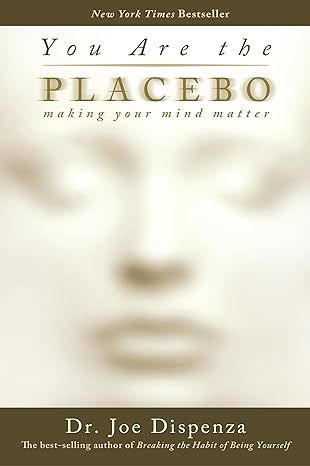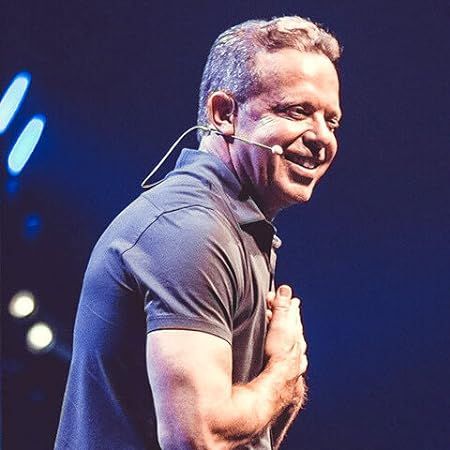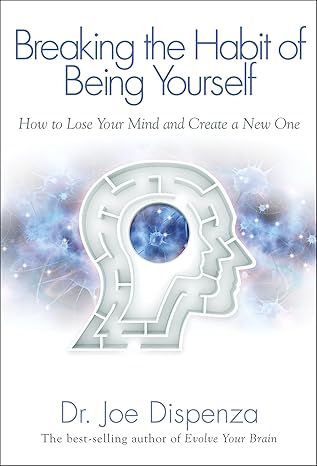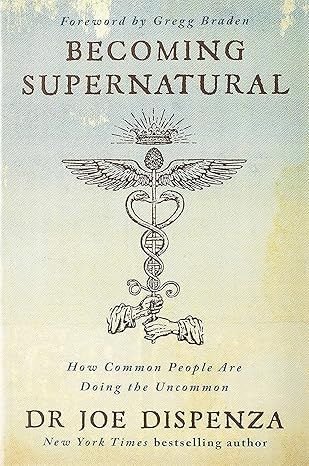You Are the Placebo: Making Your Mind Matter
4.7 out of 5
8,370 global ratings
Is it possible to heal by thought alone—without drugs or surgery?
The truth is that it happens more often than you might expect. In You Are the Placebo, **best-selling author, international speaker, chiropractor, and renowned researcher of epigenetics, quantum physics, & neuroscience, Dr. Joe Dispenza ** shares numerous documented cases of those who reversed cancer, heart disease, depression, crippling arthritis, and even the tremors of Parkinson’s disease by believing in a placebo.
Similarly, Dr. Joe tells of how others have gotten sick and even died the victims of a hex or voodoo curse—or after being misdiagnosed with a fatal illness. Belief can be so strong that pharmaceutical companies use double- and triple-blind randomized studies to try to exclude the power of the mind over the body when evaluating new drugs.
“In his paradigm-altering book, You Are the Placebo, Dr. Joe Dispenza catapults us beyond thinking of the placebo effect as an anomaly. Through 12 concise chapters that read like a true-life scientific thriller, Dispenza gives us rock-solid reasons to accept the game-changer of our lives: that the placebo effect is actually us, proving to ourselves the greatest possibilities of healing, miracles, and longevity! I love this book and look forward to a world where the secret of the placebo is the foundation of everyday life.” —Gregg Braden, New York Times best-selling author of Deep Truth and The Divine Matrix Chapters Include:
Foreward by Dawson Church, Ph.D.
Part I. Is It Possible? A Brief History of the Placebo The Placebo Effect in the Brain The Placebo Effect in the Body How Thoughts Change the Brain and the Body Suggestibility Attitudes, Beliefs, and Perceptions The Quantum Mind Three Stories of Personal Transformation Information to Transformation: Proof That You Are the Placebo
Part II: Transformation Meditation Preparation Changing Beliefs and Perceptions Meditation Becoming Supernatural
Dr. Joe does more than simply explore the history and the physiology of the placebo effect. He asks the question: "Is it possible to teach the principles of the placebo, and without relying on any external substance, produce the same internal changes in a person’s health and ultimately in his or her life?"
Then he shares scientific evidence (including color brain scans) of amazing healings from his workshops, in which participants learn his consciousness shifting model of personal transformation, based on practical applications of the so-called placebo effect.
The book ends with a "how-to" calming meditation for changing limiting beliefs and mental perceptions that hold us back—the first step in healing. You Are the Placebo combines the latest research in neuroscience, biology, psychology, hypnosis, behavioral conditioning, and quantum physics to demystify the workings of the placebo effect . . . and show how the seemingly impossible can become possible.
“I discovered that if I could teach people the scientific model of transformation (bringing in a little quantum physics to help them understand the science of possibility); combine it with the latest information in neuroscience, neuroendocrinology, epigenetics, and psychoneuroimmunology; give them the right kind of instruction; and provide the opportunity to apply that information, then they would experience a transformation...
This book is about: empowering you to realize that you have all the biological and neurological machinery to do exactly that. My goal is to demystify these concepts with the new science of the way things really are so that it is within the reach of more people to change their internal states in order to create positive changes in their health and in their external world.” —Dr. Joe Dispenza
416 pages,
Kindle
Audiobook
Hardcover
Paperback
Audio CD
First published September 7, 2015
ISBN 9781401944599
About the authors
Joe Dispenza
A New York Times best-selling author, researcher, lecturer, and corporate consultant, Dr Joe Dispenza has developed a practical formula to help people transform their lives.
Dr Joe’s mission unifies complex branches of science in an approachable way – focused on proven research, “Stories of Transformation” testimonials, and the scientific data behind spontaneous remissions. Inspired by the latest findings in neuroscience, psychoneuroimmunology, epigenetics, and quantum physics, his work integrates essential knowledge about the mind-body connection – which teaches people how to heal various health conditions and make significant changes in their lives.
Since 2010, he has partnered with renowned scientists and universities – including University of California San Diego, Harvard University, Stanford University, and others – to perform extensive research on the effects of meditation on the brain and body.
During research studies conducted at his seven-day advanced retreats around the world, Dr Joe and his team have gathered more than 20,000 brain scans (quantitative QEEG and fMRI) and more than 10,000 heart-rate variability (HRV) measurements. Their findings demonstrate the effects of sustained, elevated states of mind and emotions – and how self-regulation produces significant effects on heart and brain function, immune response, and overall mind-body health.
Working with thousands of novice and advanced meditators in these studies, Dr Joe and his team have analyzed a database of 3,000 blood metabolites collected before and after the retreats. Using pre- and post-samples, they have studied epigenetic and microbiome changes, a gross spectrum of urine metabolites, and the healing effects of breast milk.
Dr Joe’s team also has conducted extensive research on cancer, Alzheimer’s disease, and neurogenesis – as well as the effects of advanced meditators’ natural resistance to the COVID-19 virus; isolating a specific protein that strengthens the immune responses. The team also has measured how intention can directly influence gene expression and protein regulation. They have measured changes in cellular mitochondrial function, endogenous opioids, neurotransmitters, telomere length, and variations in bioactive cellular metabolic particles.
Research studies conducted at their retreats also include speech analysis to better understand the language of transformation and transcendental experiences; studies on twins and closely bonded pairs; the use of random-event generators to measure changes in collective consciousness; and the biological effects of in-person as well as Remote Coherence Healing™ sessions.
Dr Joe and his team are expanding their reach to include communities in need around the world. They’ve worked with more than one thousand children to study the effects of meditation in a school setting; veterans – including U.S. Navy SEALs – and others suffering with post-traumatic stress disorder; inmates at prisons in the U.S. and Mexico; indigenous tribes in the U.S.; and children diagnosed with Autism Spectrum Disorder. Teaching self-regulation through heart and brain coherence, they’re bringing healing to some of the world’s most vulnerable populations.
Read more
Reviews
Maybe
5
What a life changing book
Reviewed in the United States on February 28, 2024
Verified Purchase
I have not quite finished reading this book yet, but already I have learned some extremely important facts that I can use in my life. I already know that with what I have learned form this, I will be well soon. I feel very grateful and optimistic about my future. No other book or doctor has gone deeply into the logistics of the body mind connection as this book does.
My family had a history of being proud of conflict and going over the details of each antagonistic response of theirs, so I know that whatever part of that behavior I learned from them and praticed for years has caused my condition. This book teaches me how to change and replace those thoughts of any kind of conflict. I am so thankful to have this book as it leads me to be well.
Read more
9 people found this helpful
David J. Kreiter
5
Self Directed Neuroplasticity
Reviewed in the United States on July 17, 2014
Verified Purchase
You are The Placebo By Dr. Joe Dispenza A funny thing happened on the way to a deterministic model of biology. It was to be derailed by an ambitious international endeavor called the Human Genome Project, launched in 1990 and funded by the United States government. The Human Genome Project was based on the assumption that genes determine our destiny. Its mission was to map the entire human genome. Since genes construct proteins, and there are about 140, 000 proteins, it was reasoned, that there should also be about 140,000 genes as counterparts. Thirteen years later the project ended in a whimper. As it turned out, the project discovered about 23,000 genes, the same number as the lowly round worm. It took biologist more than 100 years to recognize what physicist had discovered with the advent of quantum theory at the beginning of the twentieth century--nature is indeterminate. No one to one correspondence exists between genes and their expression. We are not the sum of our parts. The Human Genome Project effectively ended the era of genetic determinism and the philosophy of genocentrism.
The decade of the 1990s opened up the fields of epigenetics and neuroplasticity as serious disciplines of study for neuroscientists, while at the same time, the concept of self-directed neuroplasticity (SDN) has democratized these disciplines, giving everyone the power to select their own gene expressions from a vast pool of possibilities. Not only has it been shown that we can change the architecture of the brain with our minds, but it now appears that our entire physical make-up, our gene expression, is subject to moment-by-moment feedback from the environment. Eric Kandel's Nobel prizing winning work demonstrated that seventy-five to eighty-five percent of our genes are not static, but are responsive to the environment, and many of these regulatory genes, which control hundreds of other genes, can be turned on and off by our thoughts, emotions, and beliefs in just minutes, thereby, explaining many miraculous examples of healings in the literature.
About one-third of the population responds to placebos in whatever form they manifest, from sugar pills, to voodoo, to sham surgeries, or injections of saline solutions. Joe Dispenza asked the obvious question. If placebos are inert substances or practices having no causal effect, what is curing these people of disease? The answer had to be that these curative effects were coming from the patient's own thoughts, attitudes, and beliefs. If this is in fact the case, the next question is how can we change our thoughts, attitudes, and beliefs to live a healthy life? Our task, Dispenza says, is to make our inner thoughts more real than our outer environment. If we are able to do this repetitively, it is possible to change our body by activating new genes to produce epigenetic changes. Dispenza states:
"In our minds, we are picking a different future potential and hoping, anticipating, and expecting that we'll get that different result. If we emotionally accept and then embrace that new outcome we've selected and the intensity of our emotions is great enough, our brains and our bodies won't know the difference between imagining that we've changed our state of being to being pain-free and the actual event that cause the change to a new state of being. To the brain and the body, they are all the same."
If enough emotion accompanies our imagined new state of being, the brain fires the same circuitry as if the event happens in reality. In cases in which a patient receives a placebo rather than a proven efficacious drug, the patient will often get the same benefits from the internal pharmacy of the body, as if she/he had taken the pharmaceutical.
When we have thoughts, neurotransmitters such as dopamine and acetylcholine are produced in the brain. At the synapse they exist in a quantum superposition of states of fire/no fire. When a critical potential is reached the neurotransmitters cross the synaptic gap, creating an electrical discharge of information. Neurons that fire together wire together, and as a result, our brains architecture creates physical evidence of what has been learned. Thinking the same thoughts or repetitiously practicing athletic skills, for example, enhance the number of connections making the pathways automatic. When large bundles of neurons fire together, a protein within the nerve cell is created that travels to the nucleus of the nerve cell where it interacts with the DNA. This protein switches on genes that, in turn, create proteins that construct new branching connections between the neurons. As a result, repetition not only strengthens connects but generates new connections.
In addition to the neurotransmitters produced when thoughts occur, protein neuropeptides are produced and interpreted by our brain and body as emotions. When the brain senses the chemicals of the emotion, it generates similar thoughts that produce more of the neuropeptide in a complementary loop. This further hardwires the subconscious brain making it difficult to break out of the loop. The neurotransmitters and the neuropeptide chemicals of emotion latch on to specific receptor sites on the cell wall throughout the body and the electromagnetic code of the messenger molecule is read creating or altering a new protein that travels to the nucleus of the cell and activates the DNA. The DNA is unzipped and transcribed by the RNA, which then travels outside of the nucleus to the Ribosome, where a new protein, such as a hormone, is produced and released into the body. Dispenza writes:
"You can think positively all you want, but that 5 percent of your mind that's conscious will feel as if it's swimming upstream against the current of the other 95 percent of your mind--your unconscious body chemistry that has been remembering and memorizing whatever negativity you've been harboring for the past 35 years; that's mind and body working in opposition. No wonder you don't get very far when you try to fight that current!"
Yet, somehow taking a placebo is able to change all of this in a moment. The key, of course, is not the placebo but the three key components of conditioning, expectation, and meaning in addition to the emotional qualities of acceptance, belief, and surrender.
Ernest Rossi, Ph.D. writes in The Psychobiology of Gene Expression: "...While the process of genetic evolution can take thousands of years, a gene can successfully alter its expression through a behavior change or a novel experience within minutes, and then it may be passed on to the next generation." (qtd. in Dispenza, 86)
If you practice focused attention your physical brain will change by creating new pathways and connections and as a result will produce the chemical signals that can change your body. Research has shown that focusing attention on skills such as playing piano or shooting basketballs have nearly the same positive results as physically practicing these skills. The more you rehearse a desire or an outcome of a future event, the more changes take place in the brain wiring and the neural chemicals. Your thoughts become the placebo.
"If you bring up the emotion of gratitude before the actual event, your body and the unconscious mind will begin to believe that the future event has already happened--or is happening to you in the present moment. Gratitude, therefore, is the ultimate state of receivership."
This quote precisely mirrors aspects of the Buddhists' idea of gratitude. If one has gratitude, it is as if the end result has already happened. It doesn't matter how it will happen, only that it will. Trying to analyze how it will happen, incorporates the analytical mind, which is the faster and shorter Beta wave state of the brain, in effect, collapsing the wave function and destroying the many possibilities involved in meaning. If we can calm ourselves and drop down into the Alpha brain wave state, in which we become unplugged from the body, environment, and time, we become more suggestible, and at the same time, it lowers the volume of the brain circuitry, especially the analytical mind. The slower brain wave states of alpha and theta gets us closer to timelessness and maintains the integrity of the experiment from the beginning to end, thereby conserving meaning. So, the important thing is to envision what you are trying to achieve without forcing the situation. Having gratitude is to surrender your ego and to simply believe, and allow, that your autonomic nervous system is in control in all of its wisdom.
To summarize Dispenza's wonderful book, our genes are mutable. They are subject to change by our thoughts and emotions on a moment-by-moment basis. To change our situation, it is not necessary in most cases to take a drug or for that matter a placebo, because we, our thoughts and our emotions, are the placebo. By eliciting the placebo response we are opening the door to our bodies own pharmaceutical warehouse. Our genes do not determine our destiny; rather, through SDN, self-directed neuroplasticity, we are in control, not by forcing an outcome, but by simply envisioning an outcome, silencing our egos, expressing the emotions of gratitude, and allowing our autonomic system to create our new destiny.
Dispenza's book, "You Are The Placebo" is top on my list of recommendations and has contributed considerably to my understanding of the nature of reality.
This book review by David Kreiter, author of "Confronting the Quantum Enigma: Albert, Niels, and John. (Amazon)
Read more
305 people found this helpful
Kindle Customer
5
I recommend it to my friends
Reviewed in the United States on May 2, 2014
Verified Purchase
I have both the author's prior books and his "Breaking the Habit" book is one of my all-time favorite books. (This is from someone with well over 700 books on my bedroom shelves and many others on my kindle.) Having said that, initially I wasn't all that interested in this book. I was familiar with the premise, but I thought it would be geared to people with serious illnesses or health problems, and I'm mostly healthy. I've been working with his meditations though, so I decided I might as well order the book on kindle and see what it was like. I'm so glad I did! I'm going to have to add it to my short list of favorite books.
Yes, I think this book can be very beneficial for people with serious health concerns, but I think it can be equally beneficial for people without them. Basically, this book is for anyone who wants to change some aspect of their life. Does that apply to anyone you know?
This is a practical book. It discusses things in easy-to-understand language and gives exercises and tools that people can easily use. It is backed by science -- both as a combination of research and empirical evidence. Neuroscience is certainly heady stuff, but Dr. Joe breaks it down in very clear explanations with the clever use of analogies that help you understand how these complex biological mechanisms work. Once you understand better why or how it works, it opens the door for you to believe it can work, and all the many examples in this book show the amazing things that happen once you believe it's possible.
This isn't a self improvement or self help book. Saying that just doesn't adequately capture it. This book is about transforming your life. I've been doing some of Dr. Joe's prior work, and I just picked up the new Meditation 1 that goes with this book. I can definitely say that even in the short time (about 3 weeks) that I've renewed my daily meditation practice, I can see a noticeable improvement in my life. I am happier, calmer, and generally more positive. I can't wait to wake up in the mornings, so I can do my meditation. And if I can see that amount of change in 3 weeks, I'm excited about what continued practice can bring.
Read more
580 people found this helpful
Gioconda Muirragui
5
Most read
Reviewed in the United States on September 9, 2024
Verified Purchase
Great book!
Gymbeaux
5
Amazing Book; verifies what I have thought to be true for decades
Reviewed in the United States on April 19, 2019
Verified Purchase
I watched and listened intently to an Internet Documentary Series titled Broken Brain 2. Why was that important? It explains how this book by Dr. Dispenza came to be in my possession. There was a physician featured on the presentation and unfortunately I did not write her name down to give her credit, who said, “I will not see a new patient until the patient reads You Are the Placebo.” Think about that for just a moment. Doctors earn a living by seeing a patient and then being paid by the patient and/or the patient’s health insurance company. What better motivation to read a book for me who will probably never be a patient of the doctor making the recommendation, especially since I can’t remember her name.
I purchased the book with some reservations. Whenever I have read a book written by a medical doctor I am usually overwhelmed with all the medical terms used and then followed by an in depth discussion as to what the terms mean, etc. I bought the book anyway as should you.
It would be my estimate that about 5% of the book contains medical terms I cannot pronounce nor that I will ever remember; nor do I have need to. But for the remaining 95% of the book, all I can say is WOW!
First a disclaimer. To some the contents of this book will be beyond what they have come to believe and frankly that is what part of the book describes. For others like me, I have always felt that the brain was more than capable of self-healing the body but until now, I do not know if anyone was sure as to how to tap into the ability. I was fascinated by Dr. Dispenza’s personal story about his bike and SUV accident and how he recovered. To put it into perspective and hopefully without getting too personal, I am experiencing severe pain in my left hip and thigh and the pain suddenly and magically appeared immediately following major back surgery; the pain is not near where the actual back repair was performed. The surgeon performing the surgery doesn’t seem to know what to do to relieve the pain. So I began researching pain that involved taking A Great Course (company name) course on Pain Management as well as reading several books and articles on pain and pain management. I felt I need to “manage” the pain because a cure didn’t seem like it was going to appear in my life. Would the contents of this book apply to me and relieve me of the pain I was experiencing? Still even more important to me, would this book validate my belief that the brain could actually heal the body if someone were to show me how to tap into that ability?
Only time will tell if my personal physical pain is relieved because I happened to read this book. If it does I will certainly revised my comments regarding the book.
As you read Dispenza’s book you quickly learn of stories of people who have used the power described in the book both consciously and subconsciously to change what the brain and the body has heretofore been trained to believe. Once you believe something to be true, it takes a great will power and attitude change to redefine that belief or like in my case it takes the need to find relief for my personal pain to find an alternative to what doctors have been unsuccessfully doing to relieve my pain. In my judgment I felt, “heck what have I got to lose by trying it?” I do feel, however, that I would have a “leg up” on others that read the book because of this review, but who do not as yet believe as I do that the brain can heal the body. Being able to open the brain to a new thought is critical as Dr. Dispenza points out before someone can actually believe in something new to the old ways of thinking. By “old ways of thinking” I mean yours and my old ways of thinking, not old ways meaning something old because of passing time.
There would be no point in telling you what is in the book because I could never do it justice. What I can tell you is that I truly believe that everyone could benefit from reading it and I do mean everyone. Why do I say this? Because as I read it, I envisioned real estate agents who were stuck in a place and who didn’t seem capable of making the changes they need to make to make a difference. So just about everyone could benefit whether they have a chronic illness or not. Still, if you are extremely skeptical, I doubt the book would be of much value even in the face of facts, logic and common sense.
After I was about half way through the book, I purchased a downloadable MP3 file created by Dr. Dispenza. Again, WOW! Not sure I have ever paid such close attention to any MP3 or CD like his Breaking The Habit of Being Yourself Book Meditations. Best $6.00 I have spent in some time if ever!
Who should read the book? Everyone! Would I read it again? Sections of the book, absolutely! Would I refer the books to my friends and family? Absolutely, already have Would I buy the book as a gift? Probably but not if I thought the receiver of the book had a closed mind to such knowledge as it would then serve no purpose.
Read more
191 people found this helpful
Me
5
Great book, but it's hypnosis (not meditation)
Reviewed in the United States on August 5, 2015
Verified Purchase
I read two of Dr. Dispenza's other books, "Evolve Your Brain" and "Breaking the Habit of Being Yourself" and I loved them both, so I had to buy his newest book, too. It's true what some reviewers noted, the book does repeat a lot of information found in his previous books, but I didn't mind it much because it served as a reminder for me, and there was plenty of new material, so it wasn't just rehashed material. Still those of you who have read his other books, be prepared for some repeated material. Another thing is that he cites the fire-walkers and strychnine swallowing ministers as people who are using an altered state of mind to accomplish something amazing. I read that it's nothing so amazing, there's a trick to it, and I think the strychnine-swallowing ministers are phonies - there is no proof to prove they actually drank strychnine, it's likely just a show, sleight of hand. Sometimes these books cite "miracles" which I doubt, even though I do believe extraordinary miraculous events occur frequently, and I do believe the stories of healing during his workshops noted in his book. Overall, the book provides much hope, and I really enjoyed it. I dogeared many pages to reread later, and plan to implement this in my life. I'll update my review in the future if I'm able to make any astounding changes in my body. So far I haven't done the "meditations" enough times to say (I've only done them twice so far). As for meditations, they are not. The scripts are hypnosis scripts, including an induction into the hypnotic state, after which the positive suggestions for self-transformation are introduced. It's absolutely, 100% hypnosis. He is basically introducing you to the meditative state (which is extremely hard to achieve, personally I suck at it) via hypnosis. Using hypnosis to help you get to the meditative state. Which is an interesting idea, as meditation is quite difficult and can be frustrating, as it's very tricky to do for any extended period of time (more on that in a moment - for anyone who isn't already familiar with meditation). Anyway, to clarify my point, Dr. Dispenza has a hypnotherapy diploma from the same college of Hypnotherapy that I do, HMI, which is located in Tarzania, California. It's a reputable, accredited college of Hypnotherapy, and Dr. Dispenza is trained as a hypnotherapist. I read this in his own account so I know it to be true. The script he uses is definitely hypnosis, (although there are many forms and styles of hypnosis). I don't say this as a criticism at all. Hypnosis is extremely useful in healing, and self-transformation. I just don't understand why it's called "meditation". Hypnosis and meditation are very similar in some ways, but in hypnosis, we do an induction to get the client into a state of relaxation (as Dispenza explains, the altered brain wave state) and then we introduce suggestions specific to the change the person wishes to accomplish. In meditation, you must clear your mind of ANY thoughts and attempt to keep thoughts of any kind at bay, to find the "gap" between the thoughts. It's very difficult NOT to think, as our brains are used to thinking constantly. The hypnotic state is not as difficult to get into, if you know self-hypnosis or are working with a hypnotist or using a recorded hypnosis. But meditation and hypnosis are not the same. Also, meditation has become very accepted in the mainstream, even hospitals will tell people meditation is good for you - hundreds of studies, including clinical studies, have been done on the benefits of meditation. Hypnosis remains somewhat on the fringe, despite some studies showing remarkable benefits from hypnosis, it is NOT as accepted as meditation, and when it IS used in healthcare settings, they often use silly terms such as "guided visualization" or "guided meditation" to keep from frightening people from the word "hypnosis" which is PRECISELY what it is. This is because many people still see hypnosis as "mind control" or "making someone get on stage and quack like a duck" it is still seen by many as frightening, suspicious, fake, or ridiculous. Hypnosis is none of those things. In the hands of a competent practitioner, hypnosis is an extraordinary tool for healing, changing habits, and improved mental and emotional health. It's great that Dr. Dispenza is using hypnosis to help people reach the meditative state, access the quantum field, and heal their minds and bodies. I don't understand why he doesn't call a spade a spade though, and call it what it is: hypnosis. The only thing I can think is that it's perhaps to avoid turning some people off or garnering ridicule. Readers can either buy his hypnosis recording online for a small fee, or they can record the script he includes in the book. He graciously provides the reader the option to record their own version and not purchase his - which is more than many authors do these days, they usually try to make you buy their add-ons and don't provide free options as Dr. Dispenza has done. Personally I prefer recording my own, as I did with his other book, as I'm familiar with recording hypnosis recordings for my clients. I purchased his recording on the last book, but ended up recording it myself anyway as I preferred my recording over his (simply a matter of personal preference, not saying that mine was better than his). Any reader can use his script to record their own free copy of his hypnosis session. All in all, Dr. Dispenza's work is very encouraging and it would be great to see the medical world begin to use people's minds to heal themselves. It's extraordinary that so little research has been done into something as important as the "placebo effect" and I thank Dr. Dispenza for taking it upon himself to do this. It's very clever, and the potential, if this can be mastered, is extraordinary.
Read more
126 people found this helpful
corabro
5
A lot to cover!
Reviewed in the United States on August 20, 2024
Verified Purchase
This is a huge book. It covers so much. Some is easy to understand and the more medical/scientific stuff can be a bit challenging for others. But it’s a classic. This will open your mind. Highly recommend.
David H. Smith
5
You Are The Placebo: A paradigm shift for personal transformation
Reviewed in the United States on May 25, 2014
Verified Purchase
Dr. Joe Dispenza’s most recent work, You Are the Placebo: Making Your Mind Matter, is the perfect follow-on to his earlier work, Breaking the Habit of Being Yourself. Those who have studied the rationale and practiced the procedures discussed in Breaking the Habit (as I have done) will find this latest volume offers even more clarity about how to “fine tune” meditative sessions, so that practitioners can change themselves in significant and lasting ways.
You Are the Placebo recounts compelling stories of people who have healed themselves – and remained healthy, by following a mindset focused on possibilities, rather than obstacles and problems. They didn’t allow the opinion of others – “professional” or otherwise – to short-circuit the beliefs they held and in many cases, felt intuitively about healing.
Dr. Joe’s process in part involves “open focus” – closing one’s eyes, taking attention from the outer world and placing it on the space around us in a way that removes considerations about the material world, allowing us to…not think. Transport yourself to the present moment, moving your intention and thus your energy to a place beyond time and thought. Allow your brain, the central nervous system, and the rest of your body to begin working together, becoming more balanced and integrated.
Instead of a linear, material world of limited potential (mostly because we keep responding to new events in the same conditioned, often unproductive ways), it is possible to enter the “quantum field” of unlimited possibility existing beyond space and time. In breaking the habit of being our old selves, we can begin to shape a new and more productive physical and emotional reality.
In current brain research, the evolving science of neuroplasticity confirms that our brains are capable of change and improvement to an advanced age, via the construction of new neural pathways or synapses. It is becoming increasingly evident that the quality of how and what we think can go a long ways toward keeping us healthy – or making us sick.
So often in life, those who are adept at helping others heal have had to go through their own baptism of fire first. In the first section of You Are The Placebo, Dr. Joe discusses what many would call – at the very least - a miraculous recovery, after he suffered severe spinal injuries when struck by an SUV while cycling in a triathlon. How he fashioned – from the inside out – the philosophy and practice that led him, against the odds to a place of optimum health, presents a powerful and informative read.
Fifteen months ago, for over six weeks, a ruptured disc placed me in the most excruciating, unremitting pain I’ve ever experienced. A specialist told me “The only option for you is spinal fusion”. A prescribed medicinal pain patch – dialed down in potency by 75% at the pharmacy before it was filled – still literally almost killed me. The healing chiropractic work Dr. Joe performed at his clinic, along with my own meditation, following the very practices described in this book, enabled me to achieve a full recovery without surgery –in the process leaving behind a number of my old self’s limiting habits.
I have also come to feel the incredible power and serenity that the simple act of expressing gratitude on a daily basis has brought into my life. We’ve all heard about the importance of expressing it after something helpful has happened. Before meeting Dr. Joe, I had never heard anyone recommend being grateful beforehand. Try it and see what you think.
One very powerful aspect of his work involves the recognition that all of our behaviors begin first as thoughts. You think about a previous experience involving sadness, fear or anger. Soon your brain begins to respond by interpreting that emotion from the record of your past, leading to physical changes. With the body fully involved, you act out that emotion, which through time can become a temperament, even a personality. With your emotions driving your thoughts, you simply create more of your past. The result is a predictable, repetitive linear path, not unlike scenes from the movie Groundhog Day.
Dr. Joe teaches you how to turn off this destructive thinking before the body can begin to act upon it. Eventually it can be left behind altogether, as a brighter future is brought into being with the help of new responses fashioned by and for yourself.
If our thoughts truly create our reality – or at the very least have a major impact on its formation, then an understanding and practice of the techniques fully discussed in this book can provide actionable advice leading to profound levels of personal transformation. As Dr. Joe says, in his Introduction about examples of the self-healing he later discusses, “…you don’t have to be a monk or nun, a scholar, or a spiritual leader to accomplish similar feats.”
My own experience in studying and practicing what Dr. Joe discusses in You Are The Placebo leads me without hesitation to recommend his work to anyone who desires to bring about systemic change in their lives, and who is willing to spend a bit of time and self-discipline to do so. Break the habit of being yourself –by yourself - and my guess is you’ll conclude that continuing to invoke the old ways of responding to things no longer deserves to play a role in your present – or your future.
Read more
360 people found this helpful
Frank Juszczyk
4
Waiting for Placebo
Reviewed in the United States on August 16, 2014
Verified Purchase
You Are the Placebo is a tough book to review with any real finality because there is so much of value in it while at the same time it has what I consider to be a substantial amount of misdirection.
First to the good stuff. Dr. Dispenza uses both neuroscience and quantum mechanics to explain how we cause our consciousness, in terms of brain function, to create distress and illness for ourselves. What I like most about his presentation of quantum theory is that he doesn't balk at following its implications to their sometimes uncomfortable conclusions. Many exponents of quantum theory rhapsodize about wave function, the observer effect, the uncertainty principle, and holographic imaging, but can't bring themselves to admit what it all means. Dispenza Lays it on the line: WE ARE MAKING EVERYTHING UP, INCLUDING OURSELVES. That's why the placebo effect can alter conventional reality at any level you choose. And he presents his evidence with admirable clarity.
Dispenza provides plenty of evidence to support his contentions in terms of scientific studies, epigenetics, personal accounts, and above all, neuroscience. His arguments are highly compelling and any thoroughgoing skeptic wanting to dismiss Dispenza's claims would be forced into simply calling his entire theoretical construct pure bunk. Otherwise, if one grants Dispenza a point here or there, all the rest will inevitably follow, so tightly knit is his presentation.
Now, to the no-so-good stuff. After Dispenza ably demonstrates that reality is just made up by our consciousness, he starts localizing this process in various parts of our brains. He begins labeling the parts, describing their functions, and presenting their respective brain-wave patterns. Color plates abound showing the activation or suppression of different areas of the brain. Dispenza suddenly is off into full-blown brain profiling and justifying it with graphic brain scans in full color of what he is arguing is the underlying reality of what is creating our world. This bit of sleight-of-hand leads to Dispenza's elaboration of a system of therapy (involving the not-so-quantum elements of time and effort) which will reprogram our brains so that we can create a more beneficial reality for ourselves.
Wait a minute. At what point did the brain become a reality outside of our consciousness? Surely, if everything is just made up, so are our brains. Which came first, our consciousness, or our brains? This question gets lost in Dispenza's eager promulgation of his Information to Transformation meditation program. And what is that? Another placebo? The problem is that the placebo, which Dispenza says is yourself, exists in contrast to the condition for which the placebo is needed. If so, which has more reality, the condition, or the placebo? Dispenza leads us to believe the placebo has the greater reality, but only because the condition isn't real in the first place. Maybe the entire universe is simply one vast placebo. I don't know anymore.
Read more
24 people found this helpful
Michael McKee
4
Science, pseudoscience and conjecture.
Reviewed in the United States on February 11, 2017
Verified Purchase
This book is an interesting blend of science, conjecture and scientific urban myth. The problem is that Dispenza presents it all as fact. That doesn't surprise me as his "doctorate" is chiropractic, which doesn't give a good grounding in understanding science. Chiropractic practitioners have made many claims over the years beyond relieving skeletal pain that have not stood up to independent quality research. I'm not against chiropractors and occasionally see one myself. I just don't consider them fonts of scientific wisdom.
Mr. Dispenza certainly mixes fact with conjecture. Take chapter 7 in which he presents the idea that the brain is only 5 percent conscious and 95 percent unconscious. As a retired mental health professional who has kept reasonably current with cognitive science, I know of no science behind this claim. The first instance of this idea came from an offhand remark by Einstein, who was a brilliant mathematician but not a psychologist. Cognitive science had not been invented yet and the main view of psychology was Freudian. Presenting this idea as science is plainly wrong. The same can be said of his presentation of suggestibility, which does not match anything I know, and I've had over 1000 post graduate hours of training in trance work as well as many years of clinical practice. For a more accurate report on that I suggest reading
Read more
65 people found this helpful
Top Joe Dispenza titles
Best Sellers
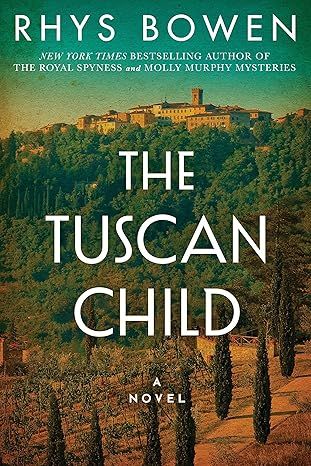
The Tuscan Child
4.2
-
100,022
$8.39
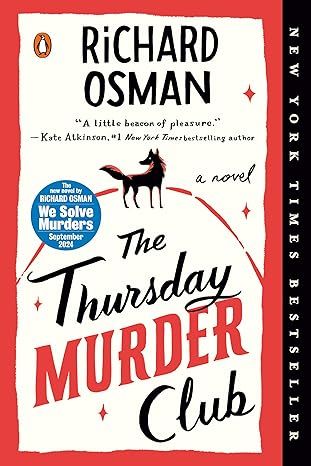
The Thursday Murder Club: A Novel (A Thursday Murder Club Mystery)
4.3
-
155,575
$6.33
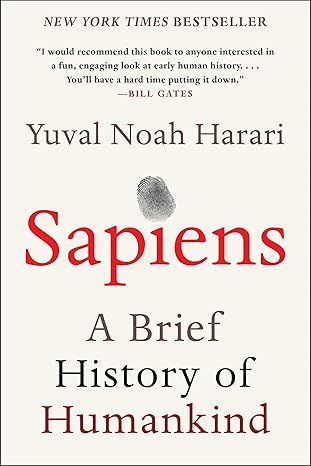
Sapiens: A Brief History of Humankind
4.6
-
140,302
$13.49
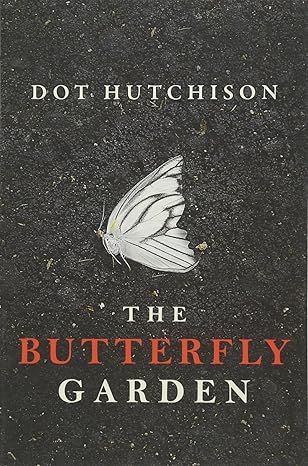
The Butterfly Garden (The Collector, 1)
4.3
-
88,556
$9.59

Things We Hide from the Light (Knockemout Series, 2)
4.4
-
94,890
$11.66
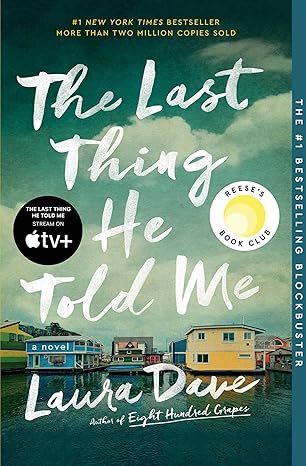
The Last Thing He Told Me: A Novel
4.3
-
154,085
$2.99

The Perfect Marriage: A Completely Gripping Psychological Suspense
4.3
-
143,196
$9.47
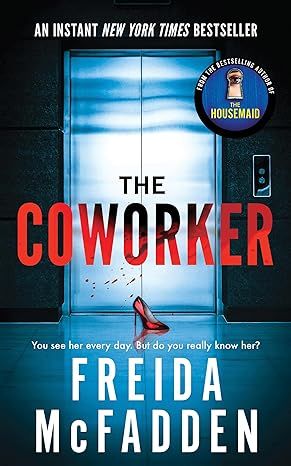
The Coworker
4.1
-
80,003
$13.48

First Lie Wins: A Novel (Random House Large Print)
4.3
-
54,062
$14.99

Mile High (Windy City Series Book 1)
4.4
-
59,745
$16.19

Layla
4.2
-
107,613
$8.99
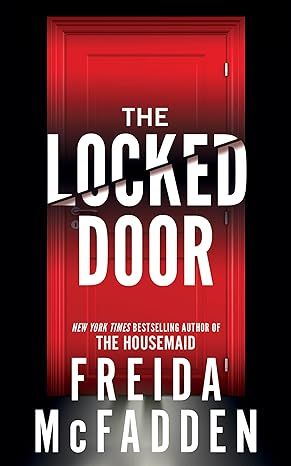
The Locked Door
4.4
-
94,673
$8.53
